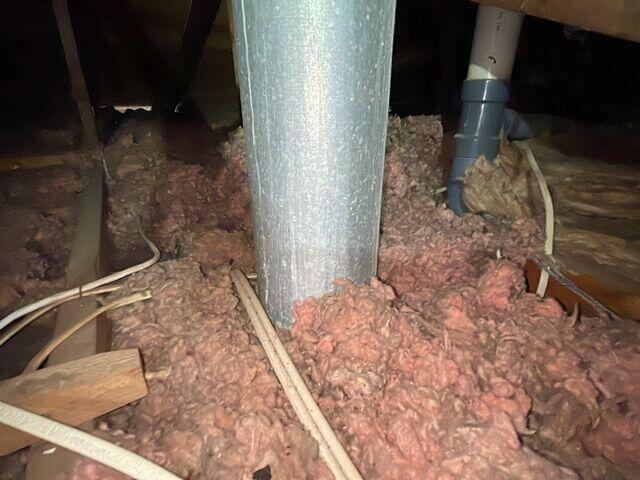
Uninsulated Chinmey
This was allowing the air traveling from below to leak into the attic. The insulation level on the bottom was next to nothing.
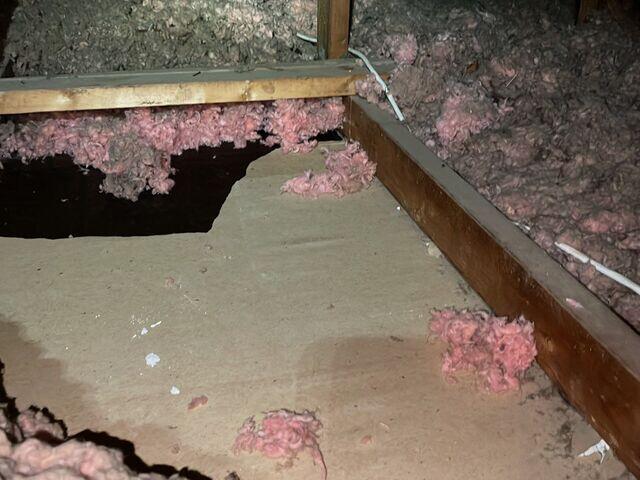
Old Insulation
Thin and bare insulation spots meant that this space was not able to keep even temperature.

Old Insulation
The old insulation was thin and dirty. The brown colors and dusty insulation proved that uncontrolled air flow was happening allowing dust and allergens to settle in the attic.
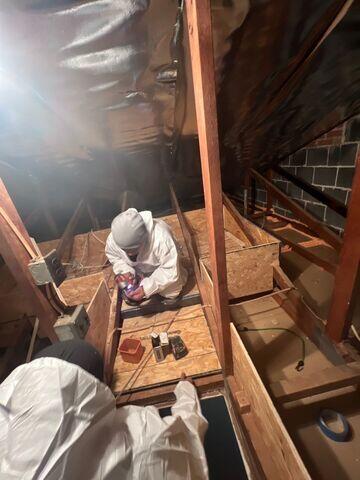
Attic Decking
Our production crew built out damning and walls around the attic entryway. This would help to still allow access to the space but hold back the insulation that would be blown in to cover the attic surface.
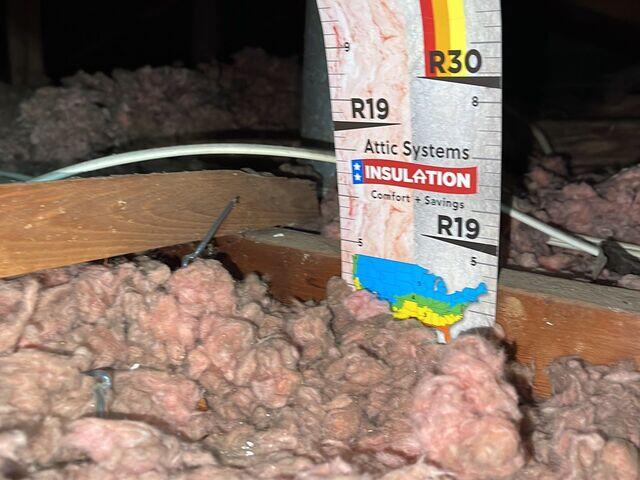
Old Insulation
The existing insulation was at R Level 18. This is how you can measure the ability of the material to insulate. We would upgrade and change it to an R30 or higher.
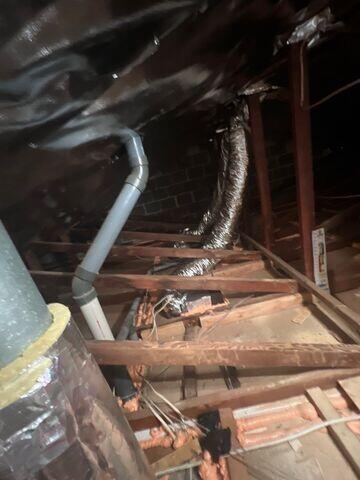
Attic Air Sealing
After removing the old insulation our team used Zyp Foam to seal up all of the gaps and cracks where air was able to move. A radiant barrier was installed on the under side of the roof and the chimney was wrapped in insulation made from rock wool.
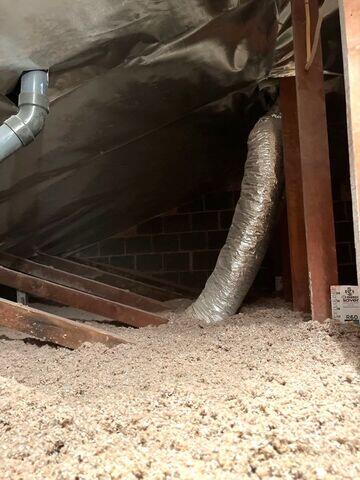
Attic Insulation
Tru Soft cellulose insulation was blown in to fill the attic and insulate over the air sealing that was completed.

Radiant Barrier
This radiant barrier helps to keep heat from the sun outside from impacting the attic.
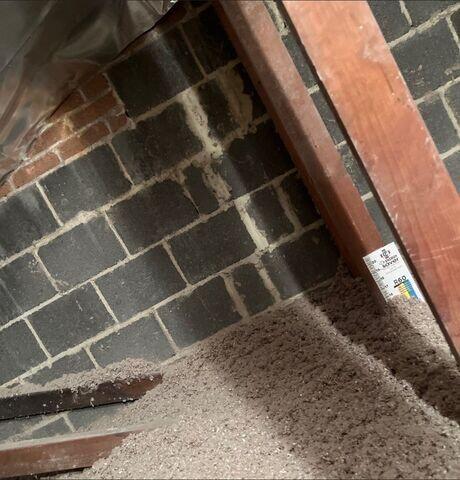
Cellulose Insulation
this area in the attic was insulated to near R60 with cellulose insulation.
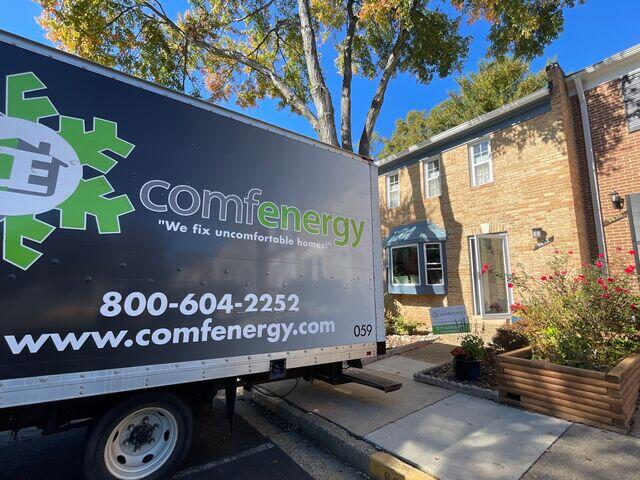
Insulation and Attic Project
Our team operates all over Northern Virginia.

